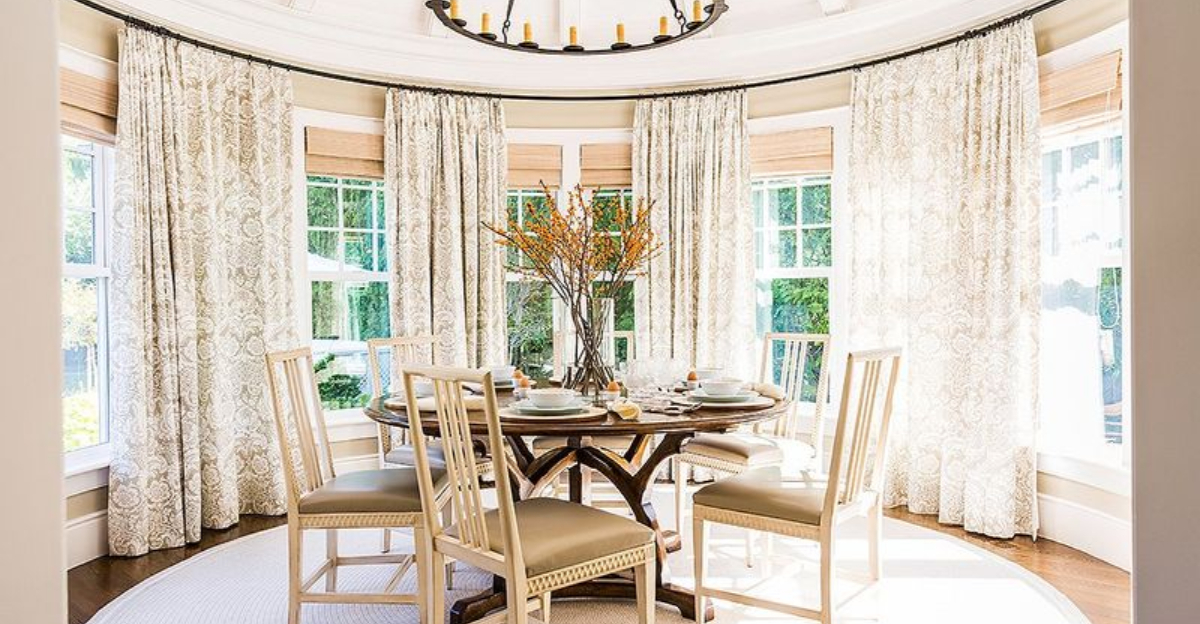Dining rooms have seen countless style shifts over the decades, from formal settings with crystal chandeliers to casual eating nooks with minimalist appeal.
Today’s homeowners want spaces that blend functionality with personal style, without falling victim to short-lived fads. Let’s explore which dining room trends design experts are steering clear of and which ones they hope never make a comeback.
1. All-Matching Furniture Sets
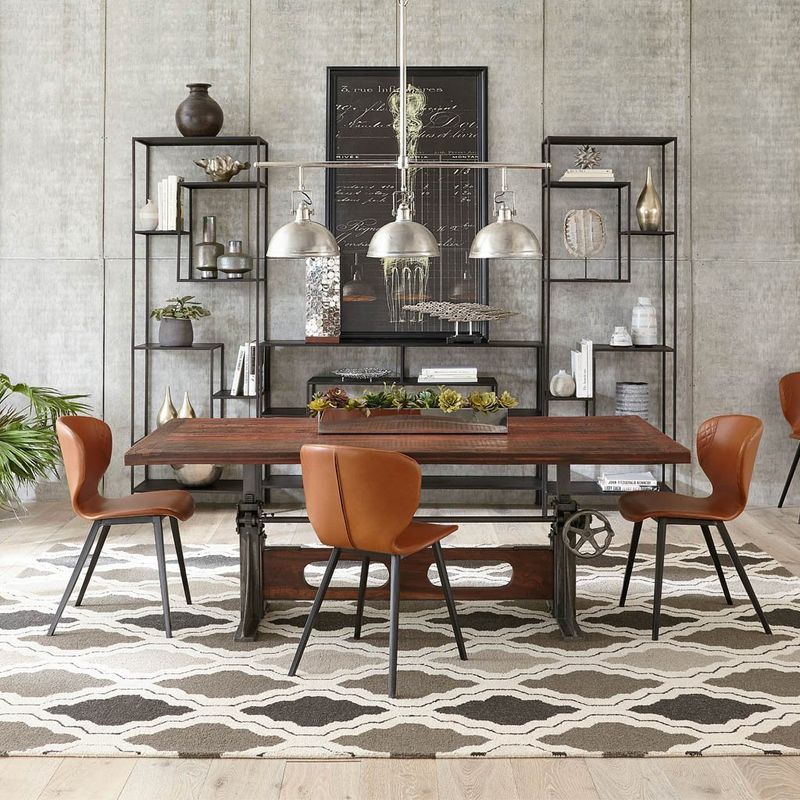
Remember those catalog-perfect dining sets where every piece looked like it came from the same factory line? While coordination has its place, these cookie-cutter collections lack personality and creativity.
Mixing complementary pieces creates more visual interest and tells a better story about your style journey. Try pairing vintage chairs with a modern table for a look that’s uniquely yours.
2. Formal China Cabinets

Those hulking china cabinets that dominated dining spaces for generations are increasingly being left in the past. Bulky and often underutilized, they consume valuable square footage while showcasing items rarely used.
Modern homeowners prefer open shelving or streamlined storage solutions that display cherished pieces without overwhelming the room. Function and form should dance together, not compete for attention.
3. Tuscan-Inspired Overload
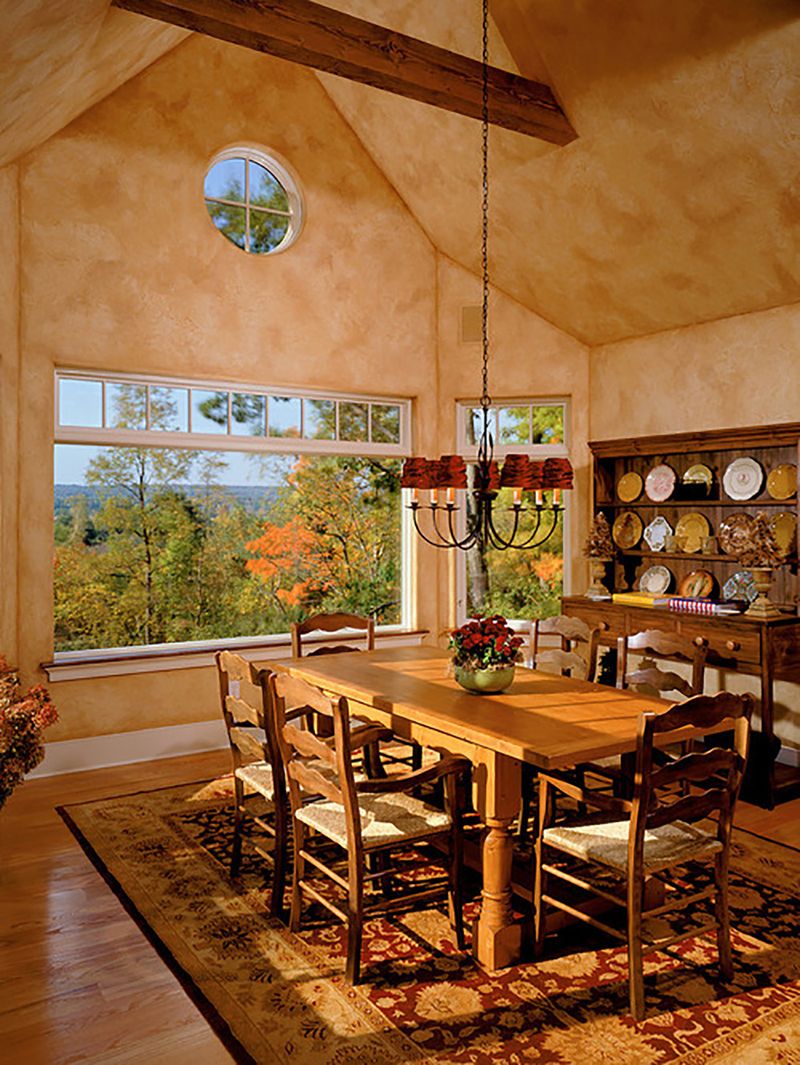
Ah, the early 2000s – when every dining room aspired to transport you straight to an Italian villa! Heavy wrought iron, terracotta colors, and grape motifs created spaces that felt more like themed restaurants than homes.
What started as Mediterranean charm quickly became overwhelming. Today’s approach incorporates subtle nods to various cultures rather than full-blown thematic commitments that can feel dated almost immediately.
4. Uncomfortable Dining Chairs

Sacrificing comfort for style is a mistake many have made when selecting dining chairs. Those sleek, minimalist seats might look magazine-worthy, but they quickly lose appeal during extended family gatherings or dinner parties.
Your dining space should encourage lingering conversations, not hasty exits due to back pain! Well-designed chairs can be both aesthetically pleasing and comfortable enough for those long holiday meals.
5. Oversized Chandeliers
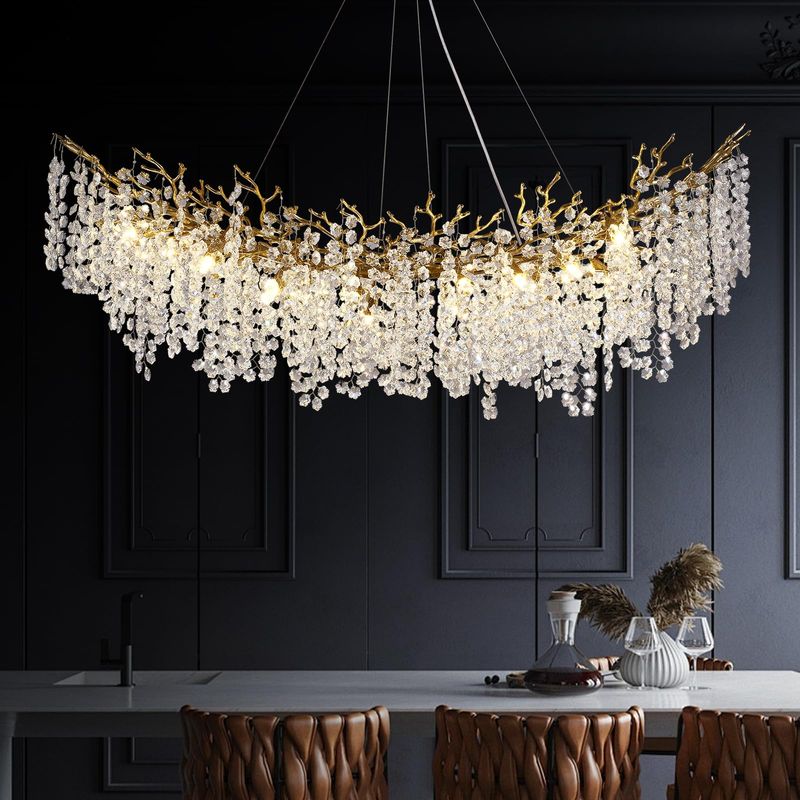
Walking into a dining room where the chandelier dominates everything can feel like the light fixture is shouting for attention. Disproportionately large lighting creates imbalance and can make even spacious rooms feel cramped.
Scale matters tremendously in dining spaces. A well-proportioned light fixture should complement the table beneath it, not overshadow it. Consider the room’s dimensions when selecting statement lighting pieces.
6. Word Art Wall Decor
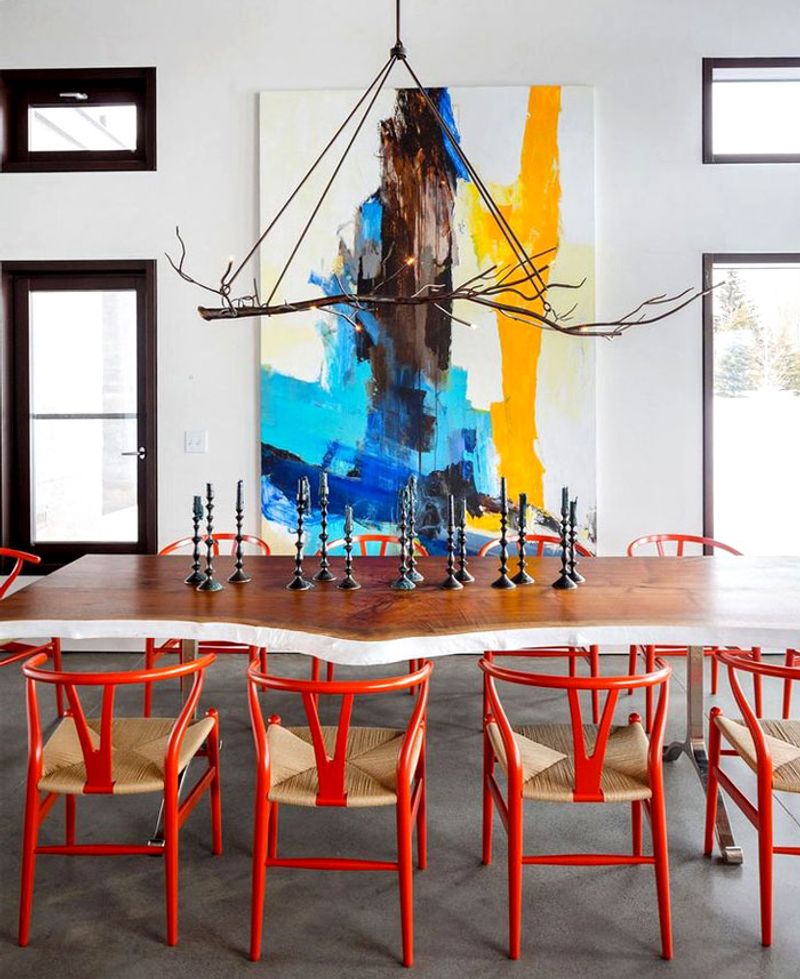
If your dining room walls proudly display phrases like “Eat” or “Gather,” it might be time for a refresh. These once-trendy text decorations have saturated the market to the point of cliché.
Walls deserve more thoughtful adornment! Consider original artwork, family photos, or vintage mirrors instead. These alternatives create conversation starters rather than stating the obvious purpose of the room.
7. Formal Place Settings 24/7
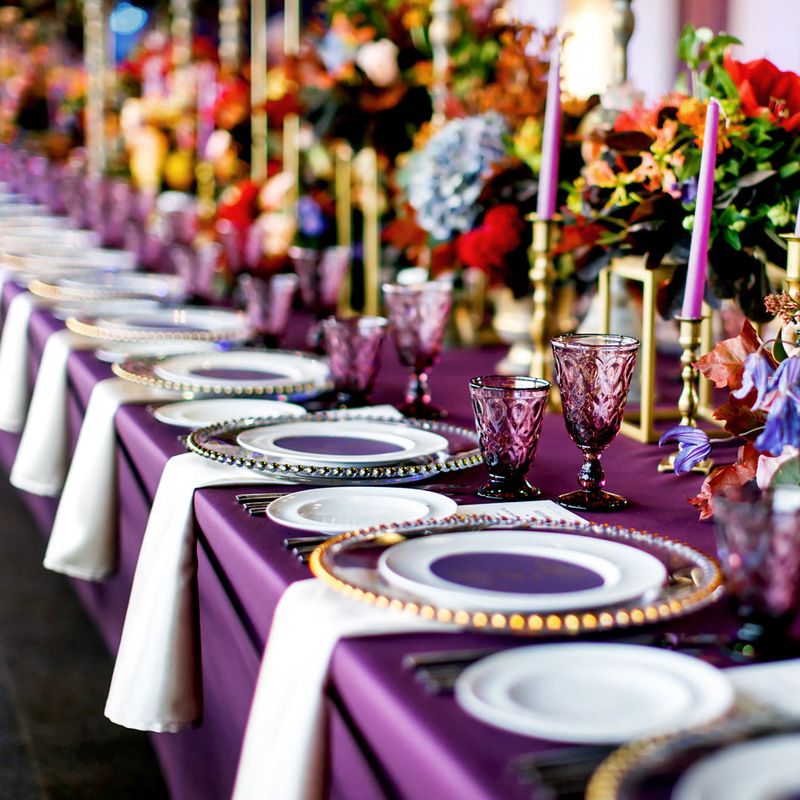
Keeping your dining table perpetually set with formal place settings when no one’s coming over is like wearing a tuxedo to bed – unnecessarily fancy and ultimately impractical. This staging technique creates a space that feels more like a showroom than a lived-in home.
Let your table breathe between gatherings. A simple centerpiece or runner maintains elegance without the fussy, untouchable vibe of constant formal settings.
8. Carpet Under Dining Tables
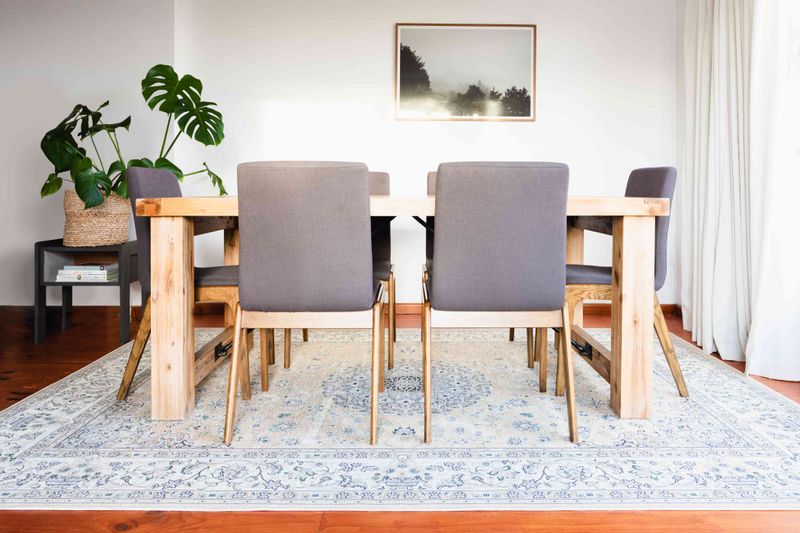
Whoever decided that carpeting belonged under dining tables clearly never had to clean up after a spaghetti dinner with children! Food particles, wine spills, and chair movement make this combination particularly problematic.
Hard surfaces like hardwood or tile offer practical alternatives that don’t require professional cleaning after every dropped morsel. If you crave softness, consider a washable, low-pile rug that won’t trap every crumb.
9. Themed Seasonal Tablescapes
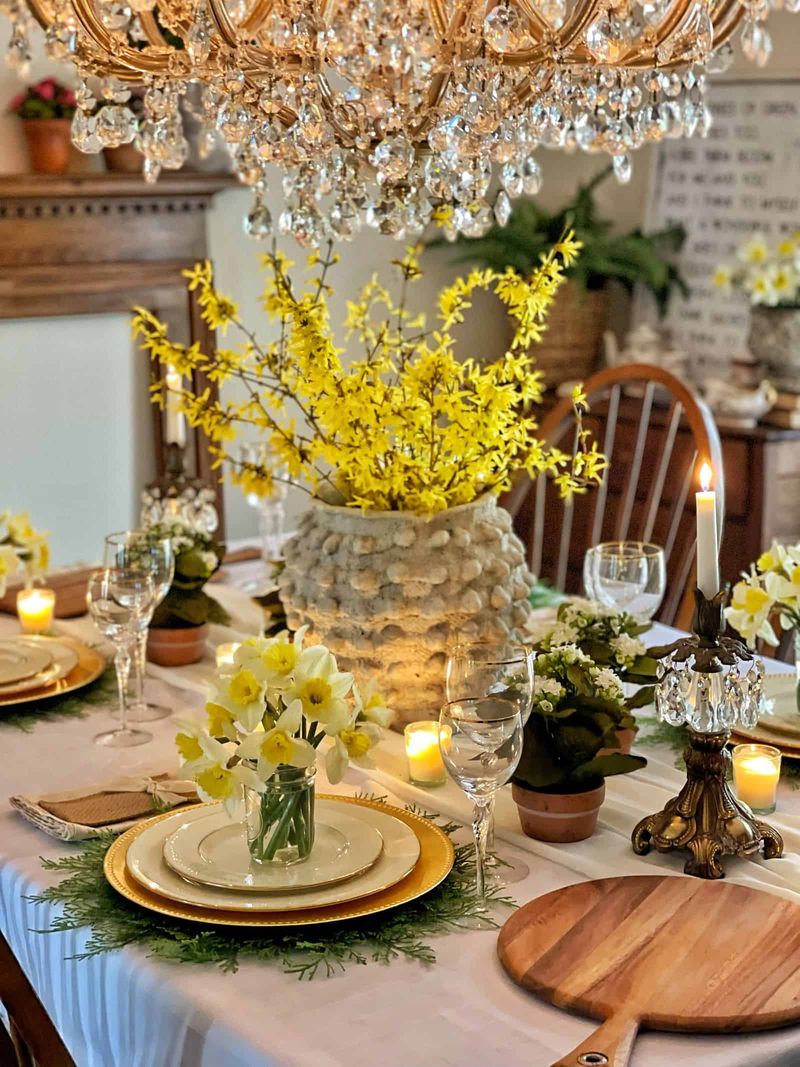
Constantly swapping out table decor for every holiday and season can become both expensive and exhausting. Those elaborate Pinterest-inspired tablescapes with color-coordinated everything look stunning in photos but rarely translate well to real life.
Instead of complete seasonal overhauls, incorporate subtle seasonal elements into a versatile base design. This approach saves both money and storage space while still acknowledging seasonal shifts.
10. Acrylic Ghost Chairs
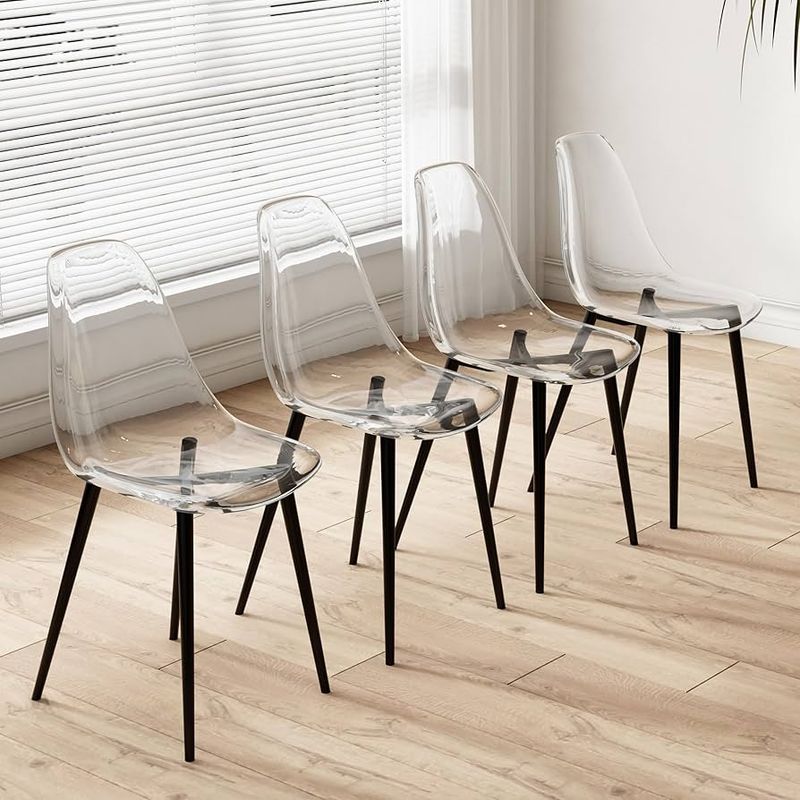
Once the darlings of modern dining rooms, these transparent seating options promised visual lightness without sacrificing seating capacity. Fast forward a few years, and their appeal has faded faster than expected.
Beyond their dated look, these chairs show every fingerprint and scratch. Many homeowners have discovered that what seemed futuristic quickly became tiresome. Their uncomfortable rigidity further diminishes their once-trendy appeal.
11. Massive Dining Tables
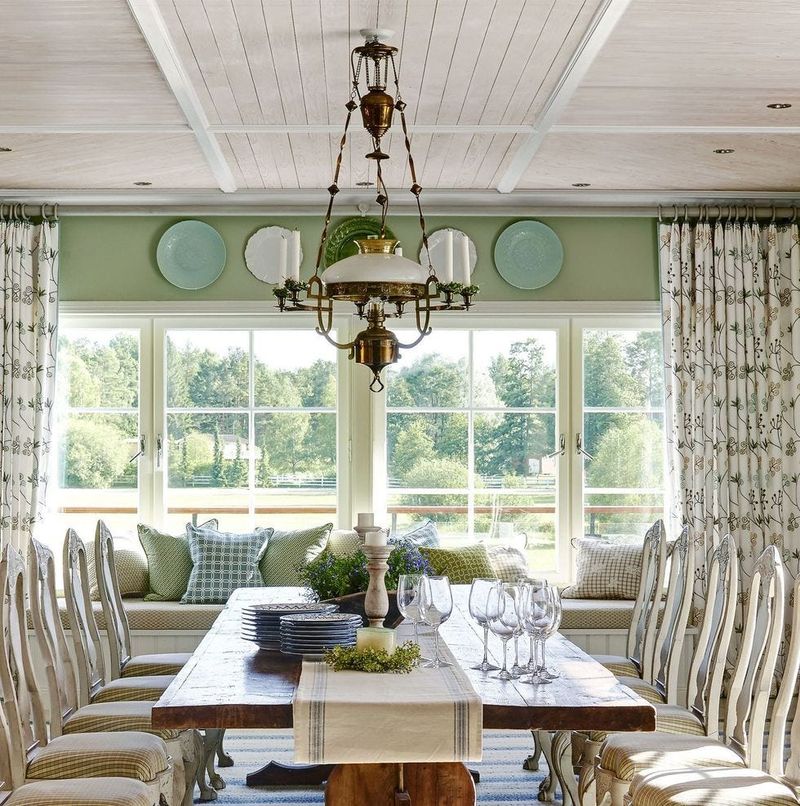
Gigantic dining tables that can seat a small village might seem impressive, but they often create awkward daily living situations. For most families, these oversized centerpieces mean shouting across excessive space during regular meals.
Consider how you actually live versus how you occasionally entertain. Extendable tables offer versatility without sacrificing everyday comfort, allowing intimate gatherings and expansive hosting capabilities when needed.
12. Upholstered Bench Seating
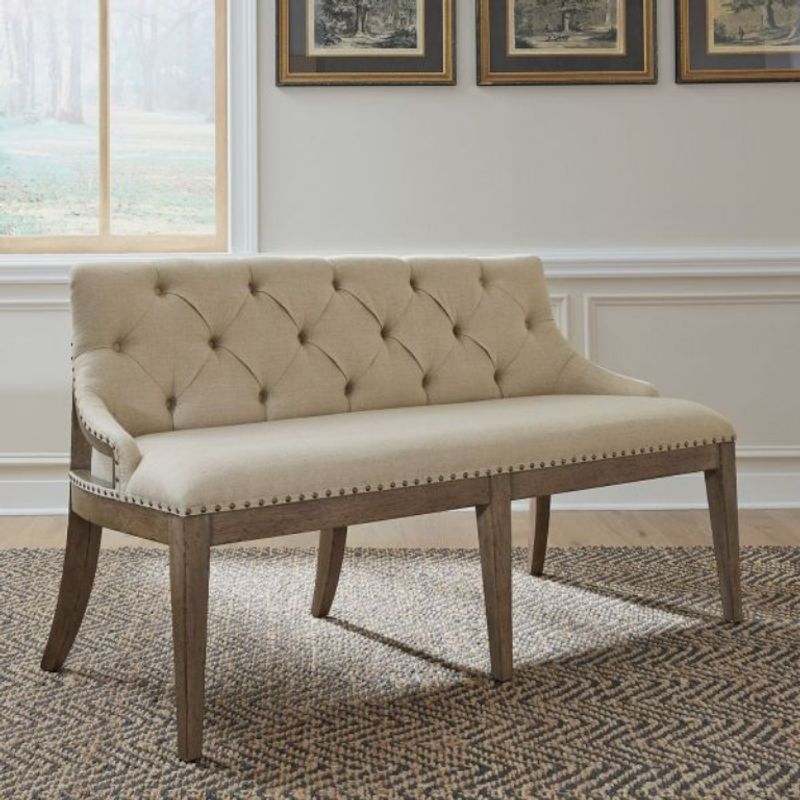
Those fabric-covered benches looked charming in design magazines, promising casual, space-saving seating. In reality, they’ve become catch-all surfaces collecting crumbs, spills, and stains with impressive efficiency.
Without proper backs, they quickly become uncomfortable during longer meals. Guests politely shift around seeking support that isn’t there. If you love the bench concept, consider wood or leather options with washable cushions.
13. Dining Rooms as Home Offices
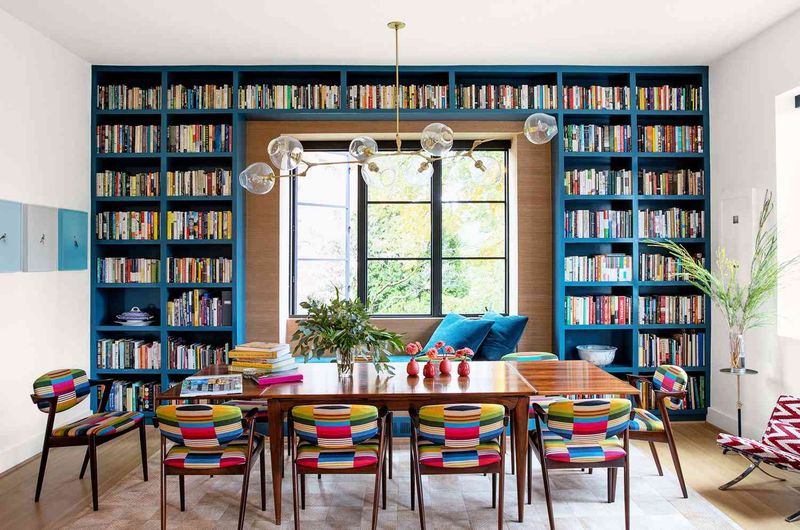
Working from the dining table seemed like a temporary pandemic solution, but many households have let this arrangement linger far too long. Laptops, papers, and office supplies permanently camping on dining surfaces create constant visual clutter.
Meals should provide a mental break from work. When your dining space doubles as an office, that separation disappears. Even small homes can create dedicated work zones that allow dining areas to fulfill their intended purpose.
14. Industrial Overload
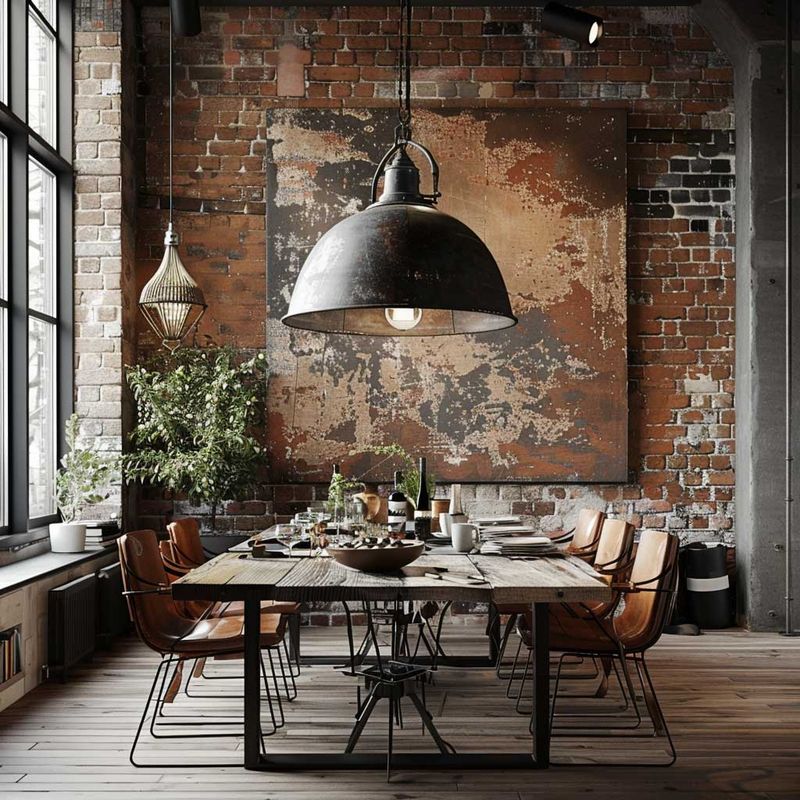
While industrial elements can add character, going overboard with metal chairs, exposed pipes, and factory-inspired lighting creates dining spaces that feel cold and unwelcoming. Meals should encourage warmth and connection, not feel like eating in an abandoned warehouse.
Balance is key! Incorporate industrial touches alongside softer elements like textiles and wood. This combination creates interest without sacrificing the comfort essential to enjoyable dining experiences.
15. Minimalism Taken Too Far

Ultra-sparse dining rooms with barely anything beyond a table and chairs might photograph well for architecture magazines but often feel sterile and unwelcoming in daily life. These spaces lack the warmth and personality that make meals memorable.
Thoughtful minimalism differs from emptiness. Include selective elements that add character without clutter – perhaps a statement light fixture or meaningful art piece that sparks conversation while maintaining clean lines.
16. Overdone Table Centerpieces
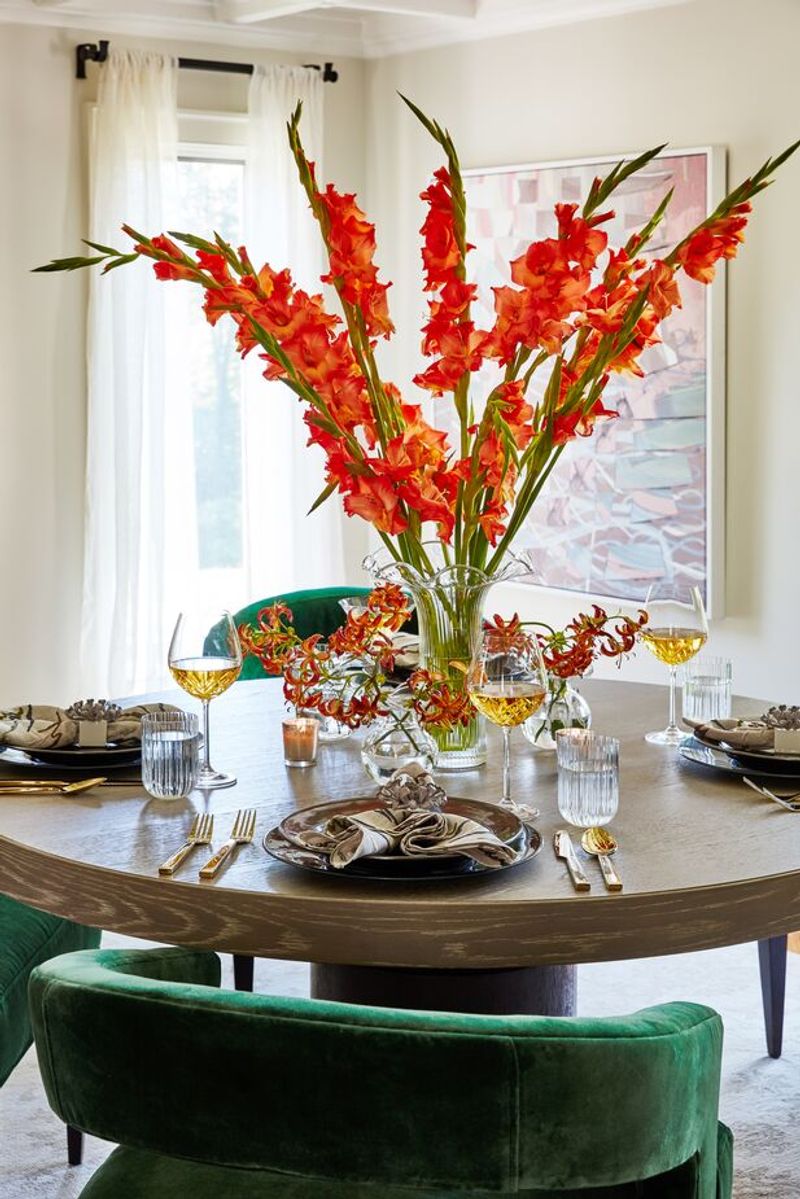
Massive floral arrangements or decorative objects that force diners to peek around obstacles to see each other defeat the purpose of gathering together. When conversation requires bobbing and weaving around visual barriers, something’s wrong with your centerpiece.
Opt for lower profile arrangements that enhance rather than hinder interaction. The best centerpieces add beauty without becoming conversation blockers – they should complement the dining experience, not complicate it.
17. Mason Jar Everything
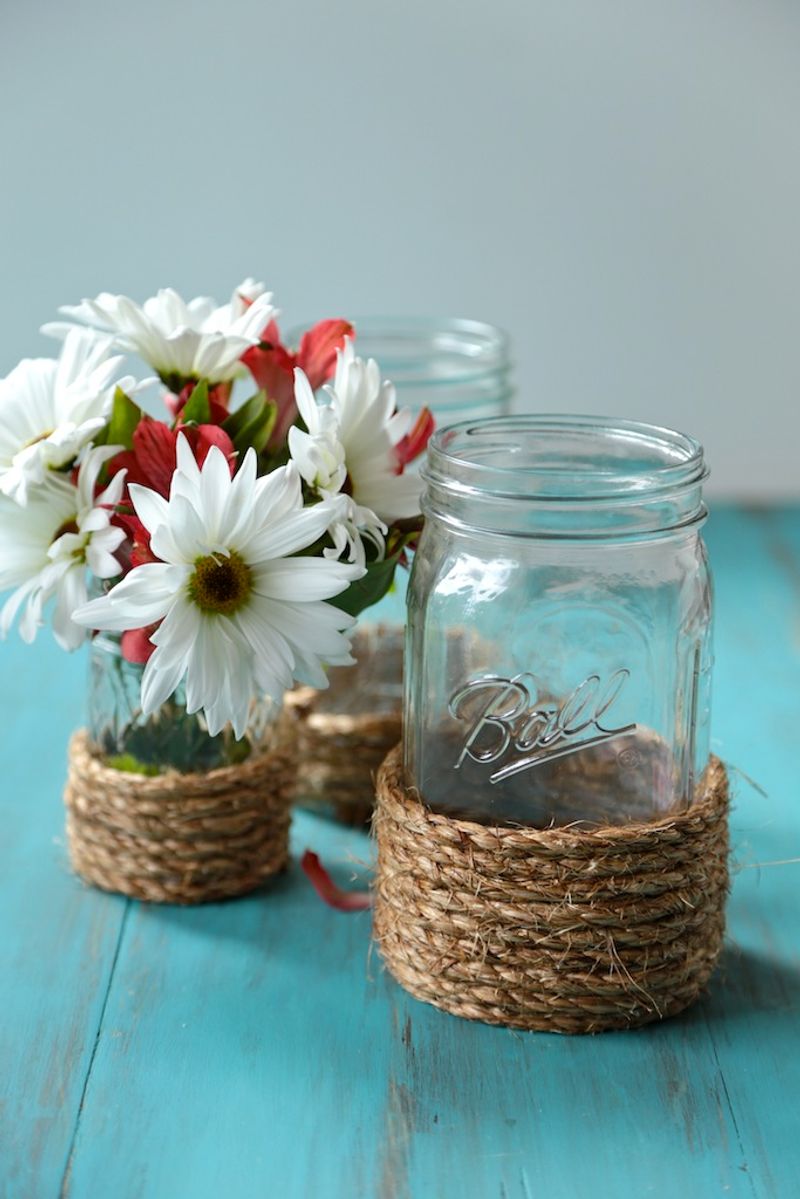
We’ve all witnessed the mason jar explosion – from drinking glasses to candle holders to floral arrangements. What started as charming farmhouse chic quickly spiraled into rustic overload in dining spaces across America.
While these versatile containers have their place, their ubiquity has diminished their charm. Consider more sophisticated glassware for everyday use and save the mason jars for occasional accent pieces or actual food preservation.
18. Overly Distressed Furniture
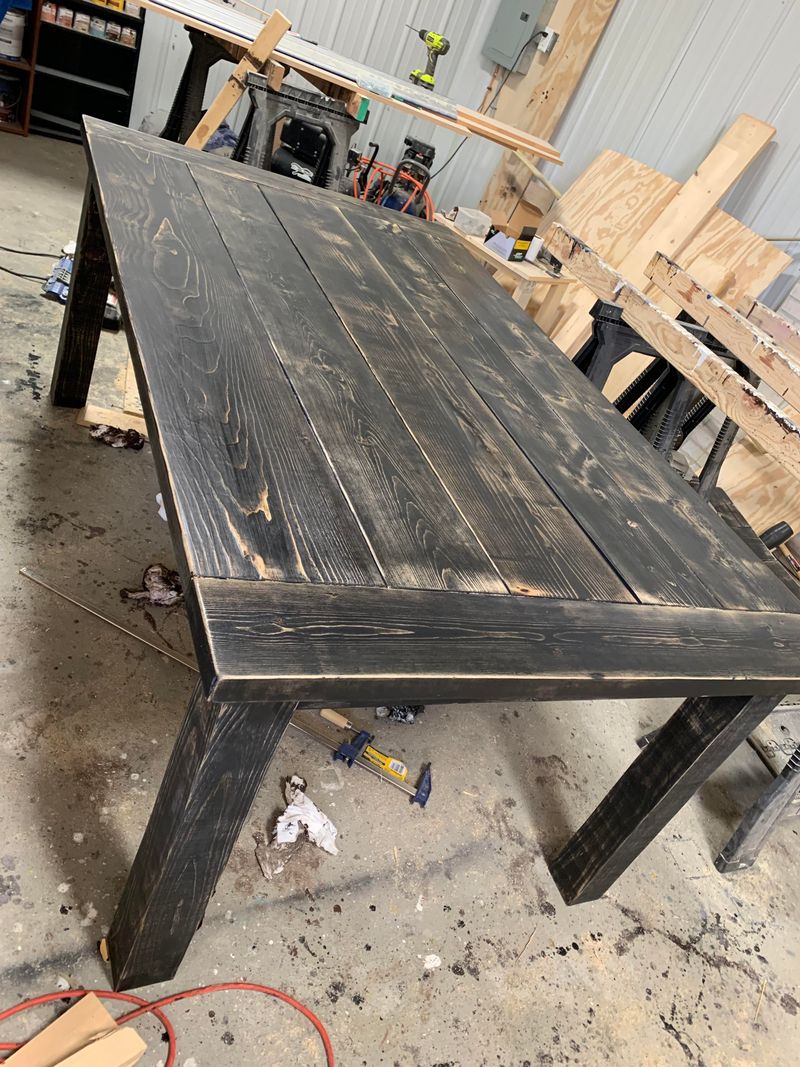
Furniture that looks like it survived multiple natural disasters brings more anxiety than charm to dining spaces. Those aggressively distressed tables with deliberate gouges, scratches and artificial aging often look contrived rather than authentically vintage.
Genuine patina develops naturally over time and tells a real story. If you love character, consider lightly distressed pieces or actual antiques that carry legitimate history rather than manufactured imperfections.
19. Plastic Fruit Displays

Nothing says “don’t touch me, I’m decorative” quite like a bowl of dusty plastic fruit. These artificial arrangements quickly become dust collectors and visual signals that your dining space isn’t used for actual eating.
Fresh fruit serves both decorative and practical purposes – it looks beautiful while remaining edible. If maintenance concerns you, consider low-maintenance alternatives like interesting bowls, small plants, or seasonal natural elements.
20. Beige-on-Beige Color Schemes
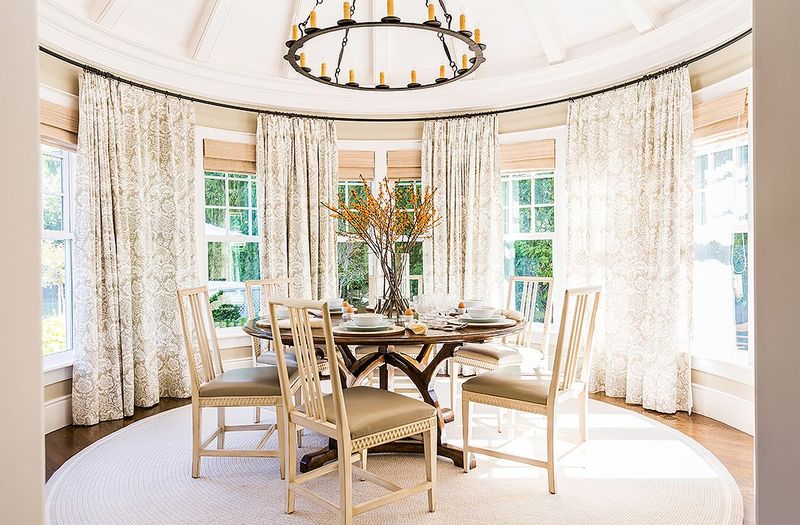
Dining rooms drowning in fifty shades of beige create unmemorable spaces that lack personality and energy. Food itself brings vibrant colors to the table – shouldn’t your dining environment do the same?
Even neutral-lovers can incorporate subtle color through artwork, tableware, or a single accent wall. Meals should stimulate all senses, and visual interest plays a crucial role in creating memorable dining experiences.
21. Shabby Chic Overload
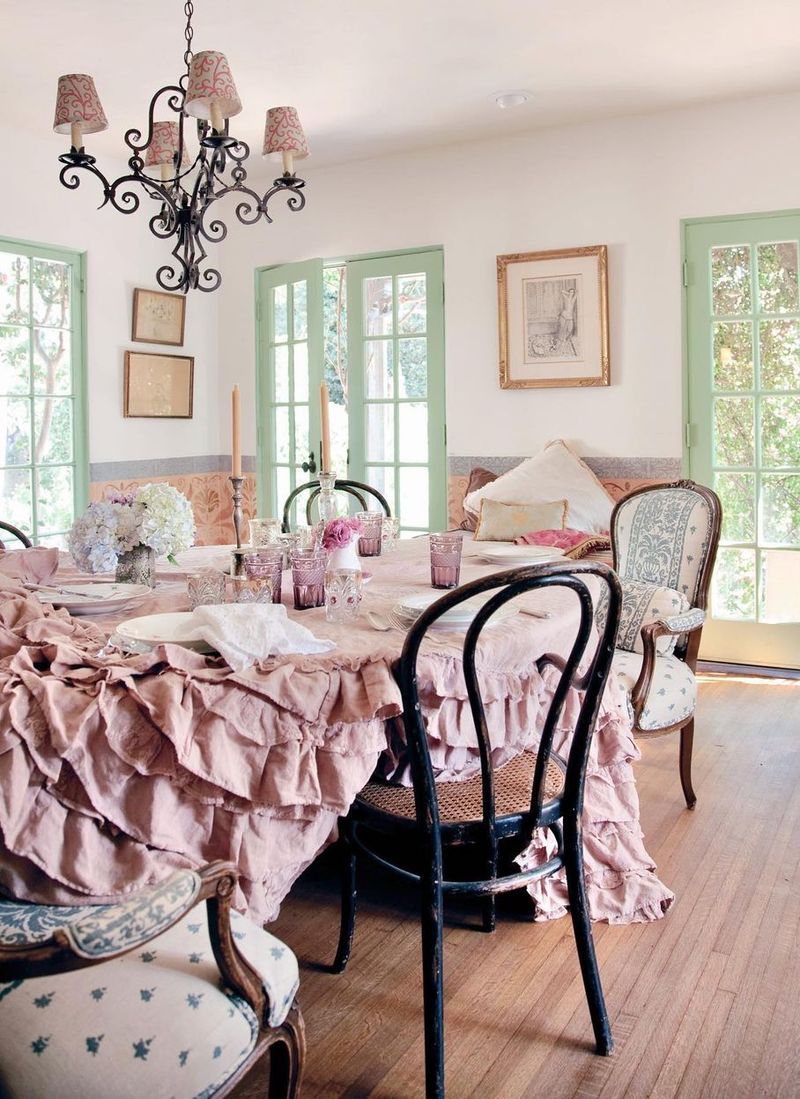
What began as an artistic approach to upcycling vintage furniture morphed into a sugary-sweet explosion of white paint, distressing techniques, and ruffled everything. The dining room became ground zero for this cottage-inspired trend that now feels decidedly dated.
The feminine frills and deliberately distressed surfaces that characterized this style have given way to cleaner lines and more balanced approaches to incorporating vintage elements. Less is definitely more when it comes to shabby chic.
22. Harvest Tables with Bench Seating

Those massive farmhouse tables paired with long backless benches might evoke communal dining imagery, but they’ve become so ubiquitous they’ve lost their charm. Beyond being predictable, they’re often impractical for everyday use.
Getting in and out requires disturbing everyone seated on your bench. Plus, without back support, these seating arrangements quickly become uncomfortable during longer meals. Individual chairs offer both comfort and easier accessibility.
23. Dining Chair Covers
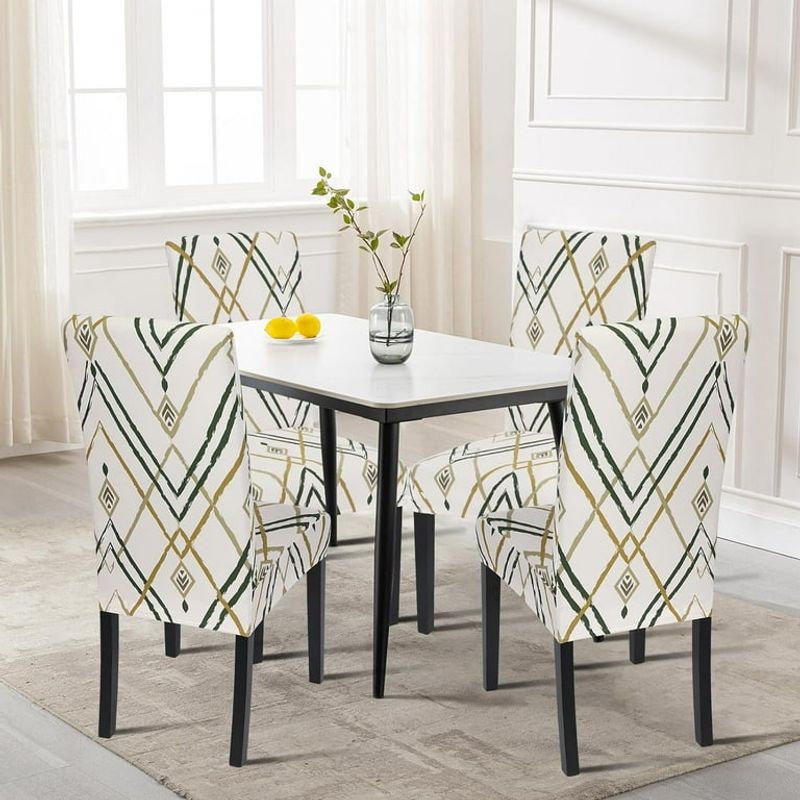
Those universal slipcovers that transform dining chairs into ghost-like figures draped in ill-fitting fabric scream “formal yet frumpy.” Originally intended to protect upholstery, they often create a dated, stuffy atmosphere reminiscent of wedding reception halls.
If protection concerns you, consider performance fabrics designed to withstand spills and stains without sacrificing style or requiring those baggy covers.
24. Faux Marble Tables
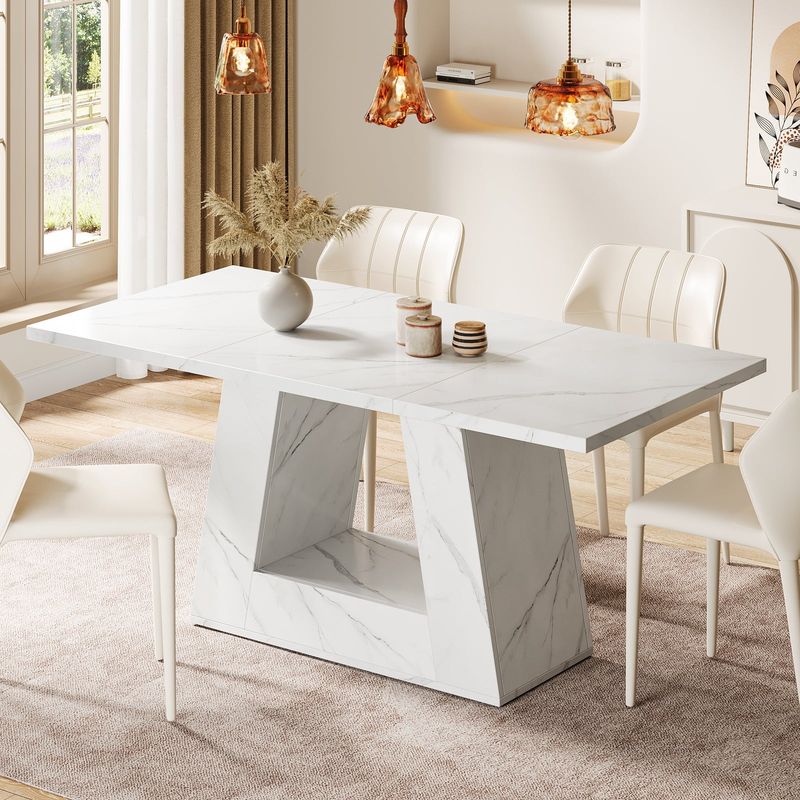
Imitation rarely matches the real thing, and nowhere is this more apparent than with faux marble dining surfaces. These tables often feature unconvincing patterns, plastic-like finishes, and edges that reveal their true nature.
If marble exceeds your budget, consider alternatives that honestly embrace their materials rather than pretending to be something else. Wood, concrete, or quality laminate options offer durability without the pretense of faux luxury.
25. Wallpaper Borders
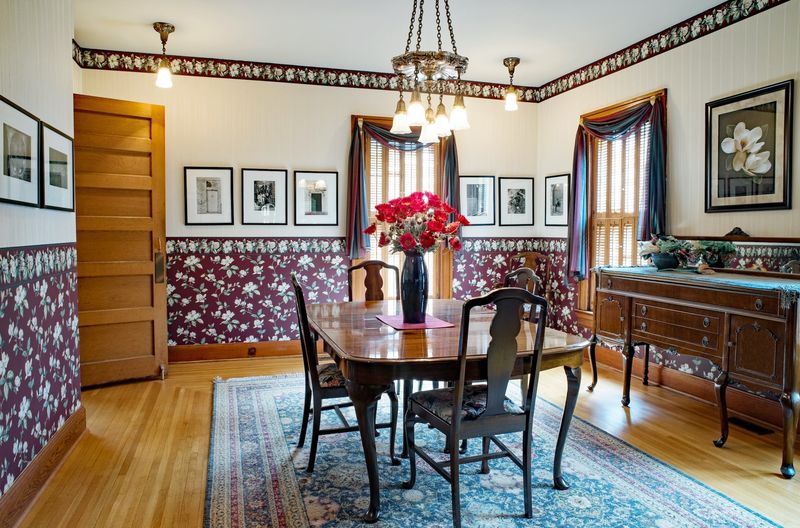
Those narrow strips of wallpaper running along dining room walls were once the height of 90s sophistication. Featuring everything from fruit patterns to country motifs, these borders attempted to add interest without committing to full wallpaper.
Today they read as dated half-measures that visually chop up walls rather than enhance them. Current design favors either bold statement walls or clean, uninterrupted surfaces that don’t artificially divide the visual space.
26. Ceiling Mirrors

Once considered the epitome of glamour, mirrored ceiling panels above dining tables have thankfully fallen from favor. Beyond the obvious disco-era references, they create uncomfortable dining experiences where guests constantly see themselves chewing from unflattering angles.
Nobody needs that kind of self-reflection during meals! Modern ceiling treatments focus on subtle texture, architectural details, or statement lighting that enhances the space without turning dinner into an awkward self-viewing experience.

